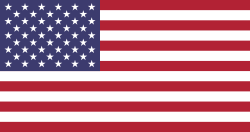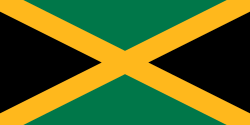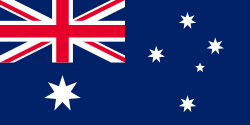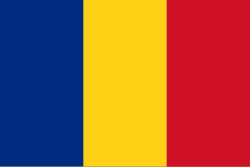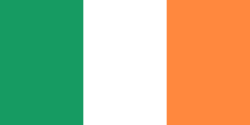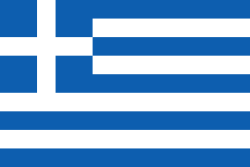Olympische Winterspiele 1998/Bob – Viererbob (Männer)
| Sportart | Bob | ||||||||
| Disziplin | Viererbob | ||||||||
| Geschlecht | Männer | ||||||||
| Teilnehmer | 128 Athleten aus 25 Ländern | ||||||||
| Wettkampfort | Spiral | ||||||||
| Wettkampfphase | 20. und 21. Februar 1998 | ||||||||
| Siegerzeit | 2:39,41 min | ||||||||
| |||||||||
| |||||||||
Olympischen Winterspielen 1998 | |
| Zweierbob | Männer |
| Viererbob | Männer |
Der Viererbob der Männer bei den Olympischen Winterspielen 1998 in Nagano bestand aus drei Läufen, von denen einer am 20. und zwei am 21. Februar 1998 ausgetragen wurden. Austragungsort war die Spiral. Am Start waren 128 Teilnehmer aus 25 Ländern. Olympiasieger wurden Christoph Langen, Markus Zimmermann, Marco Jakobs und Olaf Hampel aus Deutschland mit einer Gesamtzeit von 2:39,41 Minuten. Die Silbermedaille holten die Schweizer Marcel Rohner, Markus Nüssli, Markus Wasser und Beat Seitz vor den Franzosen Bruno Mingeon, Emmanuel Hostache, Éric Le Chanony und Max Robert sowie den Briten Sean Olsson, Dean Ward, Courtney Rumbolt und Paul Attwood, die zeitgleich die Bronzemedaille gewannen.
Titelträger
| Olympiasieger | Harald Czudaj Karsten Brannasch Olaf Hampel Alexander Szelig ( | Lillehammer 1994 |
| Weltmeister | Wolfgang Hoppe Sven Rühr René Hannemann Carsten Embach ( | St. Moritz 1997 |
Ergebnisse
| Rang | Athleten | Nation | Lauf 1 | Lauf 2 | Lauf 3 | Gesamt | |||
|---|---|---|---|---|---|---|---|---|---|
| Zeit (s) | Rang | Zeit (s) | Rang | Zeit (s) | Rang | Zeit (min) | |||
| 1 | Christoph Langen Markus Zimmermann Marco Jakobs Olaf Hampel | 52,70 | 1 | 52,90 | 1 | 53,81 | 8 | 2:39,41 | |
| 2 | Marcel Rohner Markus Nüssli Markus Wasser Beat Seitz | 53,13 | 8 | 53,15 | 2 | 53,73 | 4 | 2:40,01 | |
| 3 | Sean Olsson Dean Ward Courtney Rumbolt Paul Attwood | 52,77 | 2 | 53,58 | 10 | 53,71 | 3 | 2:40,06 | |
| Bruno Mingeon Emmanuel Hostache Éric Le Chanony Max Robert | 53,13 | 8 | 53,30 | 3 | 53,63 | 1 | 2:40,06 | ||
| 5 | Brian Shimer Chip Minton Randy Jones Garrett Hines | 52,93 | 4 | 53,42 | 4 | 53,73 | 4 | 2:40,08 | |
| 6 | Sandis Prūsis Egils Bojārs Jānis Ozols Jānis Elsiņš | 52,98 | 5 | 53,50 | 7 | 53,78 | 6 | 2:40,26 | |
| 7 | Christian Reich Steve Anderhub Thomas Handschin Cédric Grand | 52,88 | 3 | 53,47 | 6 | 53,93 | 13 | 2:40,28 | |
| 8 | Harald Czudaj Torsten Voss Steffen Görmer Alexander Szelig | 53,12 | 7 | 53,50 | 7 | 53,70 | 2 | 2:40,32 | |
| 9 | Pierre Lueders Ricardo Greenidge Jack Pyc David MacEachern | 53,14 | 10 | 53,44 | 5 | 53,81 | 8 | 2:40,39 | |
| Hubert Schösser Peter Leismüller Erwin Arnold Martin Schützenauer | 53,10 | 6 | 53,50 | 7 | 53,79 | 7 | 2:40,39 | ||
| 11 | Chris Lori Ben Hindle Matt Hindle Ian Danney | 53,52 | 11 | 53,69 | 13 | 53,93 | 13 | 2:41,14 | |
| 12 | Jim Herberich Darrin Steele John Kasper Robert Olesen | 53,74 | 15 | 53,72 | 14 | 53,81 | 8 | 2:41,27 | |
| 13 | Pavel Puškár Peter Kondrát Pavel Polomský Jan Kobián | 53,61 | 12 | 53,80 | 16 | 53,88 | 11 | 2:41,29 | |
| 14 | Günther Huber Antonio Tartaglia Massimiliano Rota Marco Menchini | 53,84 | 16 | 53,68 | 12 | 53,91 | 12 | 2:41,43 | |
| 15 | Naomi Takewaki Hiroaki Ohishi Takashi Ohori Masanori Inoue | 53,73 | 14 | 53,87 | 18 | 53,95 | 15 | 2:41,55 | |
| 16 | Toshio Wakita Yasuo Nakamura Toshiya Onoda Shinji Aoto | 54,02 | 19 | 53,66 | 11 | 54,28 | 16 | 2:41,96 | |
| 17 | Arnfinn Kristiansen Jørn Stian Dahl Peter Kildal Dagfinn Aarskog | 53,96 | 18 | 53,78 | 15 | 54,33 | 17 | 2:42,07 | |
| 18 | Kurt Einberger Thomas Bachler Georg Kuttner Michael Müller | 53,92 | 17 | 53,83 | 17 | 54,39 | 18 | 2:42,14 | |
| 19 | Pawel Schtscheglowski Alexei Seliwjorstow Wladislaw Possedkin Konstantin Djomin | 53,72 | 13 | 53,95 | 19 | 54,71 | 20 | 2:42,38 | |
| 20 | Fabrizio Tosini Andrea Pais de Libera Enrico Costa Sergio Chianella | 54,07 | 20 | 54,09 | 20 | 54,86 | 22 | 2:43,02 | |
| 21 | Dudley Stokes Winston Watts Chris Stokes Wayne Thomas | 54,41 | 21 | 54,55 | 22 | 54,80 | 21 | 2:43,76 | |
| 22 | Tomasz Żyła Dawid Kupczyk Krzysztof Sieńko Tomasz Gatka | 54,71 | 22 | 54,45 | 21 | 54,63 | 19 | 2:43,79 | |
| 23 | Jason Giobbi Scott Walker Ted Polglaze Adam Barclay | 54,72 | 23 | 54,93 | 24 | 55,23 | 24 | 2:44,88 | |
| 24 | Nicholas Frankl Péter Pallai Zsolt Zsombor Bertalan Pintér | 55,16 | 25 | 54,82 | 23 | 54,94 | 23 | 2:44,92 | |
| 25 | Zoran Sokolović Nihad Mameledžija Edin Krupalija Mario Franjić | 55,26 | 26 | 55,11 | 25 | 55,30 | 25 | 2:45,67 | |
| 26 | Sun Kuang-ming Duh Maw-sheng Chang Mau-san Cheng Jin-shan | 55,30 | 27 | 55,13 | 26 | 55,52 | 26 | 2:45,95 | |
| 27 | Florin Enache Marian Chițescu Iulian Păcioianu Mihai Dumitrașcu | 55,01 | 24 | 55,37 | 27 | 55,68 | 27 | 2:46,06 | |
| 28 | Albert Grimaldi Pascal Camia Jean-François Calmes Gilbert Bessi | 55,58 | 28 | 55,70 | 30 | 55,86 | 29 | 2:47,14 | |
| 29 | Keith Sudziarski Christian Brown Paul Zar Jeff Kromenhoek | 55,80 | 30 | 55,52 | 28 | 55,84 | 28 | 2:47,16 | |
| 30 | Jeff Pamplin Simon Linscheid Garry Power Terry McHugh | 55,79 | 29 | 55,57 | 29 | 55,87 | 30 | 2:47,23 | |
| 31 | Greg Sebald Anastasios Papakonstantinou Peter Kolotouros John-Andrew Kambanis | 55,94 | 31 | 56,18 | 32 | 56,14 | 31 | 2:48,26 | |
| DSQ | Liston Bochette Jorge Bonnet José Ferrer Joseph Keosseian | 56,45 | 32 | 55,96 | 31 | 57,35 | DSQ | DSQ | |
Weblinks
- Viererbob bei den Olympischen Winterspielen 1998 in der Datenbank von Olympedia.org (englisch)
Auf dieser Seite verwendete Medien
Olympic Rings without "rims" (gaps between the rings), As used, eg. in the logos of the 2008 and 2016 Olympics. The colour scheme applied here was specified in 2023 guidelines.
Olympic Rings without "rims" (gaps between the rings), As used, eg. in the logos of the 2008 and 2016 Olympics. The colour scheme applied here was specified in 2023 guidelines.
Autor/Urheber: B1mbo, Lizenz: CC BY-SA 2.5
Zeichnung einer Goldmedaille, basierend auf Olympic rings.svg.
Autor/Urheber: B1mbo, Lizenz: CC BY-SA 2.5
Zeichnung einer Silbermedaille, basierend auf Olympic rings.svg.
Die quadratische Nationalfahne der Schweiz, in transparentem rechteckigem (2:3) Feld.
Autor/Urheber: B1mbo, Lizenz: CC BY-SA 2.5
Zeichnung einer Bronzemedaille, basierend auf Olympic rings.svg.
Flagge des Vereinigten Königreichs in der Proportion 3:5, ausschließlich an Land verwendet. Auf See beträgt das richtige Verhältnis 1:2.
Flagge des Vereinigten Königreichs in der Proportion 3:5, ausschließlich an Land verwendet. Auf See beträgt das richtige Verhältnis 1:2.
Pictograms of Olympic sports - Bobsleigh
Flag of Canada introduced in 1965, using Pantone colours. This design replaced the Canadian Red Ensign design.
Flagge Österreichs mit dem Rot in den österreichischen Staatsfarben, das offiziell beim österreichischen Bundesheer in der Charakteristik „Pantone 032 C“ angeordnet war (seit Mai 2018 angeordnet in der Charakteristik „Pantone 186 C“).
Flag of Italy from 1946 to 2003, when exact colors were specified.
Variant version of a flag of Japan, used between January 27, 1870 and August 13, 1999 (aspect ratio 7:10).
Variant version of a flag of Japan, used between January 27, 1870 and August 13, 1999 (aspect ratio 7:10).
Flag of Australia, when congruence with this colour chart is required (i.e. when a "less bright" version is needed).
See Flag of Australia.svg for main file information.Chinese Taipei Olympic Flag. According to the official website of Chinese Taipei Olympic Committee, Blue Sky(circle) & White Sun(triangles) above the Olympic rings is neither the National Emblem of the Republic of China, nor the Party Emblem of Kuomintang (KMT), but a design in between, where the triangles do not extend to the edge of the blue circle, as registered at International Olympic Committee in 1981 and digitally rendered in 2013. Besides, the blue outline of the five-petaled plum blossom is broader than the red one. Moreover, the CMYK code of the blue one and the Blue Sky & White Sun is "C100-M100-Y0-K0", and different from the Olympic rings (C100-M25-Y0-K0). Note that it's the only version recognized by IOC.
Chinese Taipei Olympic Flag. According to the official website of Chinese Taipei Olympic Committee, Blue Sky(circle) & White Sun(triangles) above the Olympic rings is neither the National Emblem of the Republic of China, nor the Party Emblem of Kuomintang (KMT), but a design in between, where the triangles do not extend to the edge of the blue circle, as registered at International Olympic Committee in 1981 and digitally rendered in 2013. Besides, the blue outline of the five-petaled plum blossom is broader than the red one. Moreover, the CMYK code of the blue one and the Blue Sky & White Sun is "C100-M100-Y0-K0", and different from the Olympic rings (C100-M25-Y0-K0). Note that it's the only version recognized by IOC.
Man sagt, dass der grüne Teil die Mehrheit der katholischen Einwohner des Landes repräsentiert, der orange Teil die Minderheit der protestantischen, und die weiße Mitte den Frieden und die Harmonie zwischen beiden.








